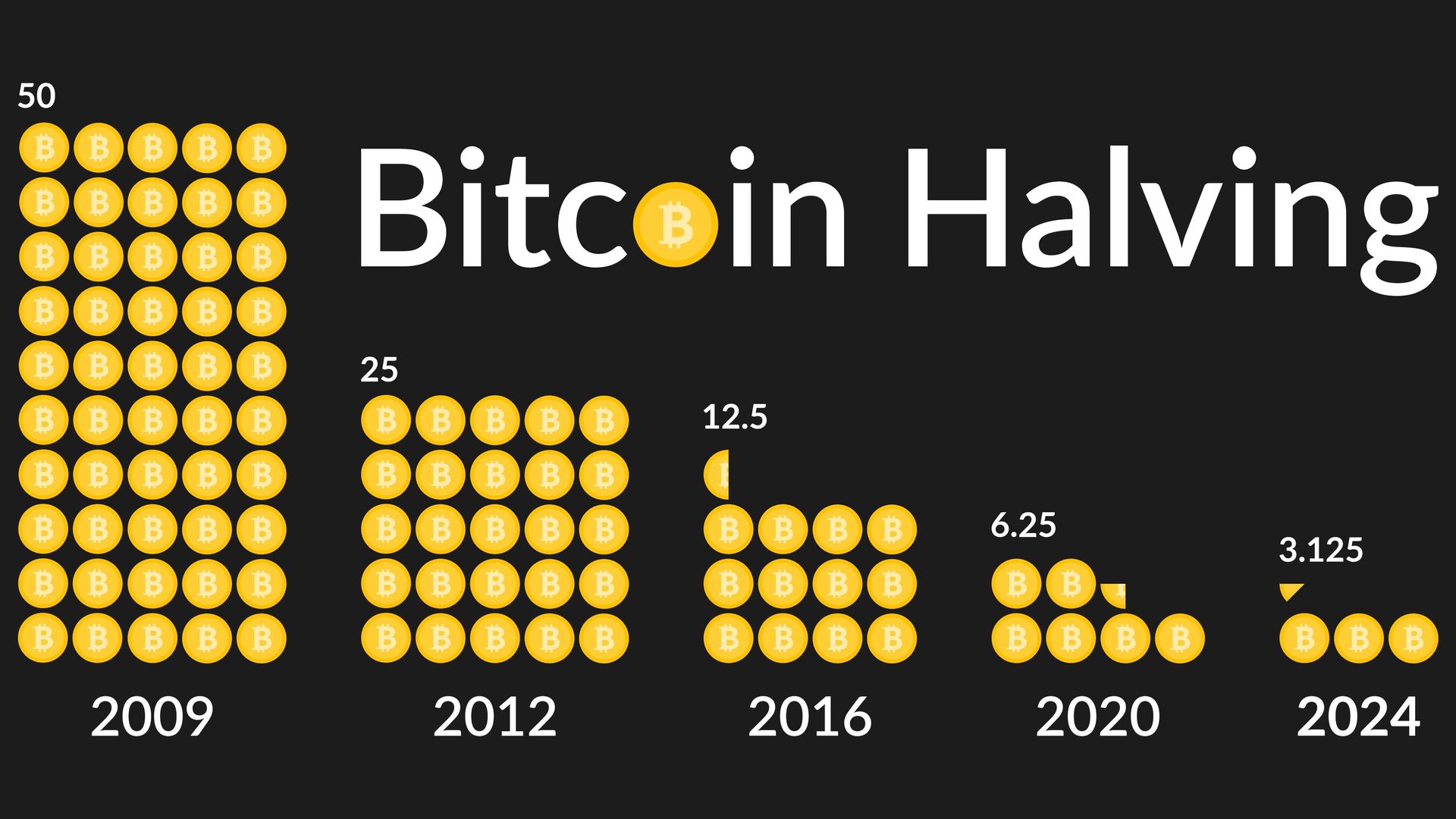Last Updated:
Jul 23, 2025
What is Bitcoin Halving?
Last Updated:
Jul 23, 2025

Author
Share this article
Bitcoin halving is an event that occurs approximately every four years, where the reward for mining a block is cut in half. This reduces the number of new bitcoins entering the market, which increases their scarcity and could lead to a price increase if market conditions remain the same.
Block rewards are part of the automatic process of the blockchain used to validate transactions and create new blocks (called mining). Miners involved in the process compete to solve a cryptographic puzzle. The first one to solve it receives new bitcoins.
After a block is added to the blockchain, the miner receives the reward, and a new round begins. All miners confirm the data in the newly added block while trying to solve the puzzle to create their own new blocks, awaiting the progressively decreasing reward.
Key points
- Bitcoin halving happens every four years when the mining reward is halved.
- Halvings reduce the speed at which new coins are created and, accordingly, the available supply.
- The last halving occurred on April 20, 2024, when the reward per block dropped to 3.125 BTC.
- The last halving is expected to happen in 2140, when the total number of bitcoins in circulation will reach its maximum of 21 million.
Why is Bitcoin halving an important event?
There are several reasons why many consider Bitcoin halving to be positive for the cryptocurrency ecosystem and market value. However, for some, it may not be such a good event.
Inflation
The main idea behind halving is to fight inflation. Inflation is the process where the purchasing power of money decreases over time. In the United States, inflation is measured by changes in the cost of a standard basket of goods and services. A "target" inflation rate of about 2% is set, but it's more of a goal than an achievable number.
Bitcoin halving helps counter inflation by reducing the number of newly created coins and maintaining their scarcity. However, this inflation protection does not shield Bitcoin users from inflation in fiat currencies, which they need to convert their bitcoins into money for purchases.
Demand
Since halving reduces the number of new bitcoins entering the market, demand for Bitcoin typically increases. This can be seen in the price of Bitcoin after each previous halving—usually, it has risen. Historical demand growth often leads to price increases, which benefits investors and speculators
Investments
Initially, Bitcoin was created as a payment method, not as an investment tool. However, once it became clear that Bitcoin had growth potential, it began to attract investors. Halving presents an opportunity for investors to see asset value increase, as the reduction in the supply of Bitcoin on the market could lead to price increases.
For miners, halving means a reduction in mining profits, as their rewards are cut in half. On a larger scale, this requires significant investments in equipment and energy. For example, Marathon Digital Holdings, one of the largest mining companies, significantly increased its capacity in anticipation of the 2024 halving.
Consumers
For consumers using Bitcoin for purchases, halving may only affect the price fluctuations of the cryptocurrency. The prices of goods and services may change depending on market conditions, and the value of their bitcoins will depend on the current price of the cryptocurrency.
When will the next Bitcoin halving occur?
The next Bitcoin halving is expected to take place in 2028, when the reward per block will decrease to 1.625 BTC.
When did previous Bitcoin halvings occur?
1) November 28, 2012
Reward: Decreased from 50 BTC to 25 BTC
Bitcoin price at the time: Around $12
2) July 9, 2016
Reward: Decreased from 25 BTC to 12.5 BTC
Bitcoin price at the time: Around $650
3) May 11, 2020
Reward: Decreased from 12.5 BTC to 6.25 BTC
Bitcoin price at the time: Around $8,600
4) April 20, 2024
Reward: Decreased from 6.25 BTC to 3.125 BTC
Bitcoin price at the time: Around $65,000
Should you invest in Bitcoin during a halving?
Many investors expect Bitcoin's price to rise after halving, as historically, the price has often increased following such events. However, it’s important to keep in mind that the price may behave differently, and risks are always involved. For example, after the 2024 halving, the price of Bitcoin remained relatively stable for a while before a decline, after which the market became more optimistic again.
Conclusion
Bitcoin halving is an important event for a crypto calendar that reduces the number of new bitcoins entering the market and maintains the cryptocurrency's scarcity. This reduces inflation and could increase Bitcoin's price in the long term. However, Bitcoin's price is also influenced by other factors, such as economic conditions and regulations.
As the final halving approaches in 2140, when the total number of bitcoins reaches the maximum of 21 million, this event will continue to impact the ecosystem and the cryptocurrency market
Bitcoin halving is a key event for a crypto calendar, as it allows investors, miners, and market analysts to track significant shifts in supply dynamics and anticipate potential price movements
Author
Share this article
